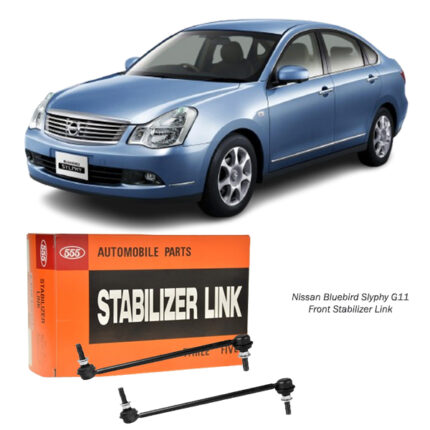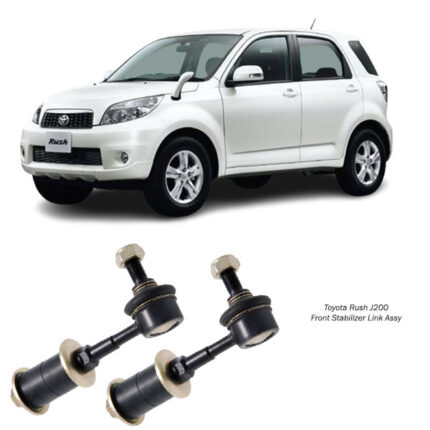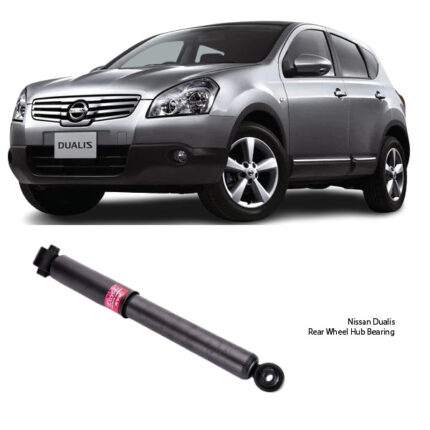Get Nissan Dualis Rear Shock Absorber Assy 349078 in Kenya
The Rear Shock Absorber Assembly, commonly written as Rear Shock Absorber Assy, is a critical component in your vehicle’s suspension system. Its job? To control the movement of your rear wheels by absorbing shocks from uneven roads and bumps.
Without shock absorbers, your car would bounce uncontrollably every time you hit a pothole, speed bump, or rough patch. The rear assembly specifically works on the rear axle — ensuring stability, grip, and comfort for passengers sitting in the back of your car.
Components of the Rear Shock Absorber Assembly
A typical Rear Shock Absorber Assy includes:
Shock Absorber (Damper) – The main cylindrical component filled with oil or gas that absorbs impacts.
Coil Spring (sometimes part of strut assembly) – Helps bear vehicle weight and provides rebound force.
Mounting Bushes & Hardware – Rubber or polyurethane mounts that secure the shock to the chassis and rear suspension arm.
Dust Cover & Bump Stop – Protect the shock rod from dirt and limit maximum compression.
Together, these parts manage how the rear wheels respond to road irregularities, ensuring control, safety, and comfort.
Purpose & Function of Rear Shock Absorbers
Rear shocks work closely with springs and other suspension parts to provide:
Ride Comfort – Absorbing jolts and vibrations before they reach passengers.
Road Grip – Keeping tires firmly planted on the road surface for better traction.
Handling & Stability – Minimizing body roll and rear-end sway during cornering.
Braking Performance – Ensuring stable contact between rear tires and the road during hard braking.
Hydraulic vs. Gas-Filled Rear Shock Absorbers
1. Hydraulic Shocks
These use oil to absorb and dissipate energy from suspension movement.
Affordable
Smooth ride quality
Common in older vehicles
2. Gas-Filled Shocks
These contain pressurized nitrogen gas to reduce oil foaming (aeration), especially in rough driving conditions.
Improved performance in rough terrain
More consistent damping
Common in modern vehicles and performance setups
Signs Your Rear Shock Absorbers Need Replacement
Rear shocks don’t last forever. They endure thousands of compressions and rebounds every time you drive. Over time, they wear out, losing effectiveness. Signs of worn-out rear shocks include:
Excessive Bouncing – Car bounces for several seconds after hitting bumps.
Poor Rear Grip – Rear tires lose traction on rough or wet surfaces.
Sagging Rear End – Rear of the car sits lower than normal.
Clunking Noises – Metallic sounds from the rear suspension.
Fluid Leaks – Oil leaking down the shock body.
Uneven Tire Wear – Rear tires wear irregularly, often with cupping patterns.
If you notice any of these, it’s time for new shocks.
Why Rear Shock Absorbers Are So Important
Many drivers underestimate the importance of rear shocks, but they play a critical role in:
Comfort – Reducing rear passenger discomfort on rough roads.
Stability – Preventing the rear of the vehicle from floating or swaying.
Towing Safety – For vehicles pulling trailers, rear shocks help control extra weight.
Braking Efficiency – Ensuring the rear tires maintain full contact during emergency braking.
How Rear Shocks Work – Step by Step
Compression (Hitting a Bump)
- Rear wheel moves upward.
- Shock absorber compresses.
- Hydraulic oil (or gas) passes through internal valves, converting kinetic energy into heat.
Rebound (Returning to Normal)
- Wheel moves back down.
- Shock extends to its normal position.
- Controlled rebound prevents excessive bouncing.
This constant cycle happens thousands of times per drive, controlling unwanted motion.
How Long Do Rear Shocks Last?
On average, rear shock absorbers last between:
50,000 to 100,000 km for regular driving.
30,000 km or less if you drive on rough/off-road surfaces.
The lifespan varies based on:
Driving conditions
Road quality
Load carried (heavier loads = faster wear)
Benefits of New Rear Shock Absorbers
When you install new rear shocks, you instantly gain:
Smoother Ride – Less bouncing, jolting, and vibration.
Improved Handling – Better rear stability in turns.
Stronger Rear Grip – Tires stay firmly planted.
Quieter Operation – No more knocking noises.
Better Braking – Shorter stopping distances, especially on uneven roads.
Reduced Wear on Other Parts – Healthy shocks reduce strain on springs, bushings, and tires.
Rear Shock Absorbers vs. Rear Struts – What’s the Difference?
People often confuse shocks and struts:
Shock Absorber – Solely controls wheel motion (damping).
Strut – A structural suspension component that includes a damper, spring perch, and mounting point.
Some vehicles (especially FWD sedans) use struts at the front and shocks at the rear.
Can You Replace Just One Rear Shock?
Technically, yes — but it’s not recommended. Always replace rear shocks in pairs (left + right) for balanced handling and safety. Uneven damping can lead to:
Uneven braking
Rear instability
Premature wear on other suspension parts
DIY or Professional Installation?
While experienced DIYers can replace rear shocks at home, it’s usually best left to professionals if:
You lack specialized tools.
You’re unsure about torque specs.
Your rear suspension setup is complex (multi-link, air suspension, etc.).
At OneStop Garage, we offer professional shock absorber fitting at affordable rates.
Real-Life Example – Rear Shock Replacement at OneStop Garage
Yesterday, a Toyota Caldina came into OneStop Garage with clunking noises and bouncy rear suspension. Diagnosis? Blown rear shocks. We replaced them with brand-new KYB shocks, and the customer immediately noticed:
Quieter ride
Better rear stability
Reduced bouncing
Improved comfort
Follow us on Facebook for more parts.




